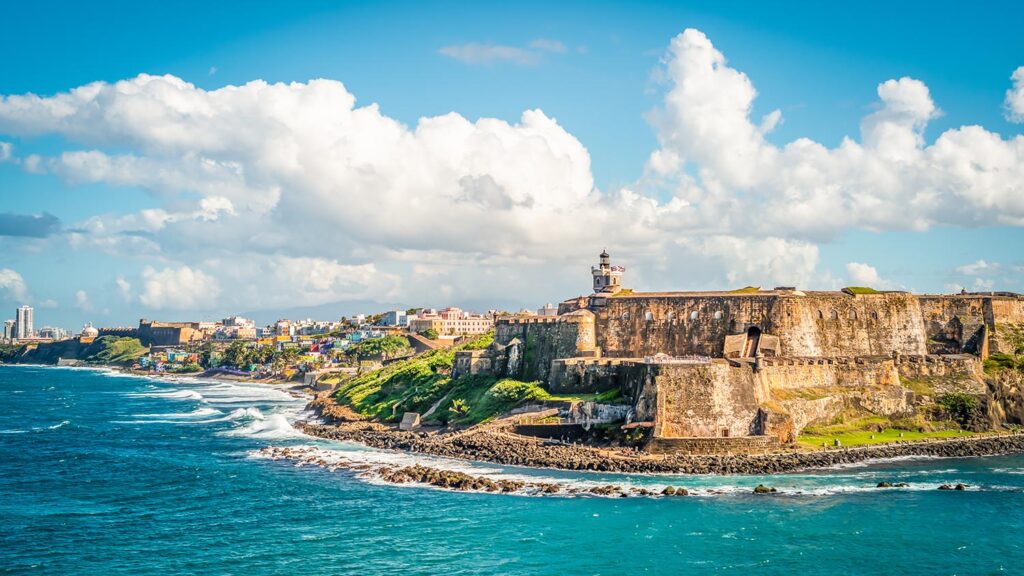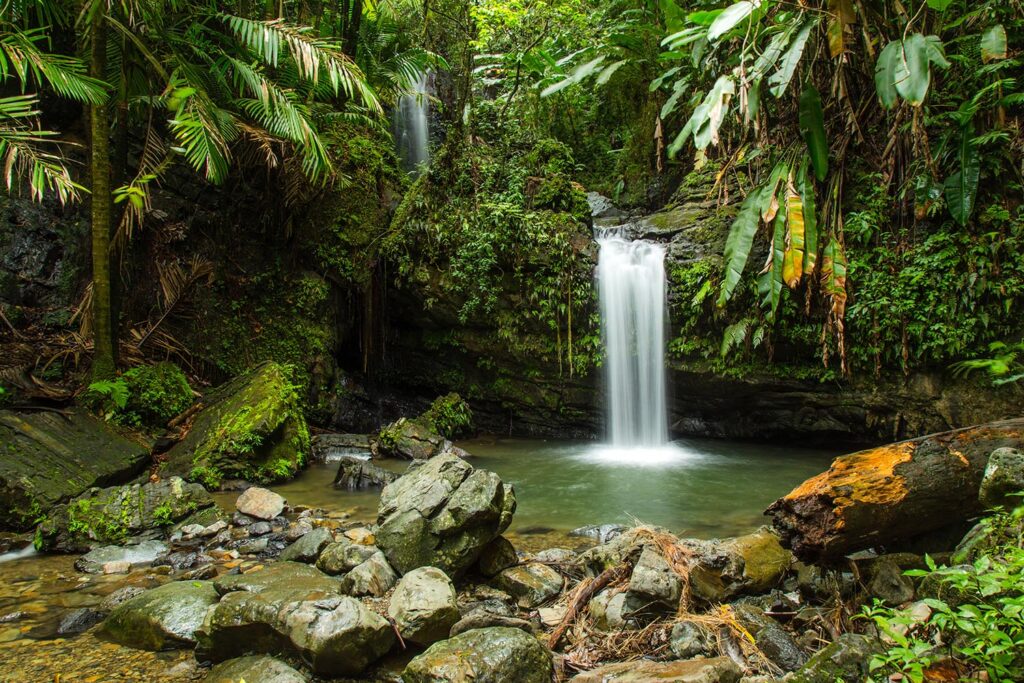
View the completed proceedings here
View the schedule here
Plenary speakers:
- History of BIOGEOMON [Nancy Dise, UK Centre for Ecology and Hydrology; Martic Novak, Czech Geological Survey; Melanie Vile, West Chester University] — From Acid Rain to the Anthropocene: 37 years of BIOGEOMON: and Development of catchment science [Jamie Shanley, U.S. Geological Survey; Steve Sebestyen, U.S. Forest Service]
- DEIJA forum — Rebecca Barnes, NSF/AAAS; Julia Perdrial, University of Vermont [leaders]
- The Biogeochemical History of Puerto Rico in Five Acts- Ariel Lugo, U.S. Forest Service, International Institute of Tropical Forestry.
- Playing with chutes and ladders: the slippery slope of redox in terrestrial biogeochemistry –Whendee Silver, University of California, Berkeley [remote or in-person]
- Our Changing Manipulation of the Global Sulfur Cycle – Eve-Lyn Hinckley, University of Colorado Boulder
- Unraveling the fate of mercury in peatlands with the help of micrometeorology, isotopes, paleoecology, genomics, an ice-age and of course some duct tape – Kevin Bishop, Swedish University of Agricultural Sciences
- Enhancing silicate weathering to promote soil carbon sequestration – Sara Vicca, Assistant Professor, University of Antwerp (remote)
- The Biogeochemical Redox Paradox: How do we make a foundational concept more predictive of biogeochemical state changes? – Amy Burgin, Professor, Department of Ecology & Evolutionary Biology, University of Kansas
- Changes in catchment dissolved organic matter export fuel unforeseen freshwater cyanobacterial blooms in the Anthropocene- Irena Creed, Professor, University of Toronto
- Lunchtime workshop: Decolonizing Biogeochemistry. Justin Richardson, University of Virginia; Pedro Matos Llavona, University of Massachusetts; Bryan Rodríguez Colón, The University of Kansas [leaders]

Sessions:
1.Tropical biogeochemistry – Monday January 8th starting at 1:45 PM in Auditorium 3
Bill McDowell, University of New Hampshire and Florida International University; Tana Wood,International Institute of Tropical Forestry
We note the first meeting of BIOGEOMON held in the tropics with a special session devoted to the tropics. With year-round elevated temperatures, a broad range of rainfall regimes, and the most diverse flora and fauna on earth, many biogeochemical processes are intensified in the tropical setting. We welcome contributions on all aspects of tropical biogeochemistry and the hydrological processes that influence them.
2. Aquatic Carbon Cycling in the Anthropocene: from Molecules to Meta-Analyses – Tuesday January 9th starting at 9:30 AM in Auditorium 3
Kim Wickland, U.S. Geological Survey; Kevin Ryan, U.S. Geological Survey; Jakub Hruška, Czech Geological Survey
Carbon exchange, transport, and transformations within aquatic ecosystems comprise significant terms in the global carbon cycle. Aquatic ecosystems can serve as both sources and sinks of organic carbon and carbon greenhouse gases through burial, metabolism, and exchange with the atmosphere. Dissolved and particulate organic matter fuels heterotrophic food webs, influences light availability for aquatic photosynthesis, and is associated with pollutant transport. Carbon dioxide (CO2) influx from the atmosphere fuels autotrophic production, and CO2 and methane (CH4) are produced by organic matter decomposition and can be emitted to the atmosphere. Evidence for changing aquatic carbon cycling in the Anthropocene suggests increasing alteration of ecosystem function (e.g., brownification) and water quality for human use (e.g., disinfection by-product formation, algal blooms). In this session, we welcome contributions that leverage field-based, experimental, and/or modeling studies of aquatic carbon processes, chemical character, and/or fluxes to quantify fundamental drivers of changing aquatic carbon cycling. Theoretical and literature syntheses on these topics from local to global scales are also encouraged.
3. Soil carbon stabilization and C sequestration – Monday January 8th starting at 1:45 PM in Auditorium 2
Caitlin Hicks Pries, Dartmouth College; Sebastian Dötterl, ETH Zürich
We need to understand soil carbon sequestration to identify efficient nature-based solutions for mitigating climate change. However, the heterogeneous nature of soil organic carbon complicates our understanding. Whether soil carbon is sequestered in particulate forms via environmental and microbial constraints or stabilized by minerals affects its persistence in the face of global change and its responsiveness to management. For many soil types, it is still an open question under which circumstances soil carbon can be stabilized over long periods of time and at which rate and quantity carbon inputs can actually be sequestered in soils. In this session, we invite contributions that highlight the role of carbon inputs, microbial activity, and stabilization mechanisms in sequestering soil carbon. We welcome researchers presenting empirical or modeling studies alike. We particularly invite research attempting to upscale knowledge gathered at small scales to larger scales and research focusing on the role of natural versus management related drivers of soil carbon stocks along pedo-climatic gradients, among management systems and soil types, or experimentally.
4. Change in the Anthropocene: Nutrient cycling — Eutrophication to Oligotrophication – Tuesday January 9th starting at 1:30 PM in Auditorium 2
Liisa Ukonmaanaho, Natural Resources Institute Finland; Filip Oulehle, Czech Geological Survey; Emily Elliott, University of Pittsburgh
The Industrial Revolution, followed by the intensification of land-use (e.g. agriculture, forestry, mining) and transportation, has had a profound effect on the planet’s nutrient cycles. Anthropogenic CO2 emissions are significantly absorbed by terrestrial ecosystems, especially forests, often through the significant contribution of nitrogen deposition, which drives productivity. Long-term alleviation of N limitation may then lead to progressive P limitation. On the other hand, intensification of land-use can lead to nutrient leaching, and in turn eutrophication in aquatic ecosystems. In addition, these ecosystems are still coping with the legacy of acidic atmospheric pollution, or are undergoing changes in dynamics due to global change (disturbances, land-use change, forest management, etc.). In our session, we welcome all contributions related to the long-term evolution of nutrient cycling in aquatic and terrestrial ecosystems (experiments, monitoring, modelling), including those that demonstrate feedbacks on the capacity of ecosystems to sequester carbon.
5. Wetland hydrology and biogeochemistry Thursday January 11th starting at 10:45 AM in Auditorium 3
Melanie Vile, West Chester University; Ülo Mander, University of Tartu, Estonia
Wetlands are pervasive over much of the earth, and often play a disproportional role in the hydrologic and biogeochemical functioning of ecosystems. They attenuate floods, retain sediments and nutrients, and accumulate organic carbon. Biogeochemical transformations are common in wetlands through redox processes. We welcome contributions on all aspects of wetland hydrology and biogeochemistry.
6. Metal and biogeochemical cycling on geological and historical timescales — Paleoreconstructions – Tuesday January 9th starting at 9:30 AM in Auditorium 5
Tomas Navratil, Czech Academy of Sciences; François Chabaux, University of Strasbourg
Over the last years, our understanding of metals distribution and biogeochemical cycling in natural and contaminated environments advanced significantly. Progress in analytical methods, speciation assessments, and isotopic tracing techniques focused our pursuit on improving measurements, application of models, and forecasting or hindcasting of ecosystem behavior. This session will cover the paleoreconstructions of distribution, dynamics, cycling, speciation, and uptake of essential elements as well as toxic metals in ecosystems. We welcome new assessments of evolution in element fluxes, availability, toxicity, deficiencies, and transport in contaminated and pristine environments. Original contributions to paleoreconstructions including biogeochemical archives (sediments, peat, tree-rings and glacial ice cores, etc.), changing climate, impacts on soil processes, atmosphere-soil-plant interactions, and development of new analytical methods and approaches are welcome.
7. Modeling and synthesis for scaling biogeochemical cycling across space and time – Posters only
Ben Sulman, Oak Ridge National Laboratory; Karin Rebel, Utrecht University
Large-scale patterns of carbon and nutrient cycling, including how they will respond to a changing climate and anthropogenic pressures, is a critical question for ecosystem science and society. This session focuses on the development and use of modeling and synthesis tools to bridge the gap from fine-scale measurements and experiments to large-scale patterns and global change time scales. We welcome topics including new model frameworks for representing biogeochemical cycles, model-based experiments investigating biogeochemical interactions, and new syntheses or big-data analyses (including remote sensing) relevant to improving understanding of ecosystem processes and their responses to global change drivers across scales.
8. Biogeochemical response to extreme events – Thursday January 11th starting at 10:45 AM in Auditorium 2
Sujay Kaushal, Universtoy of Maryland; Yuehan Lu, University of Alabama; Paul Mayer, Environmental Protection Agency; Martin Novak, Czech Geological Survey
Extreme events, such as wildfires, droughts, floods, hurricanes, pollution, and volcanic eruptions, have the potential to profoundly disrupt the natural biogeochemical processes, producing far-reaching effects on the cycling of essential elements as well as on the overall functioning and productivity of ecosystems. This session invites contributions to improve our understanding of how various types of ecosystems respond to extreme events and recover and adapt in the aftermath of significant environmental disturbances. We welcome investigations utilizing a variety of approaches (e.g., observations, modeling, experiments) and conducted on different spatiotemporal scales.
9. Solute and sediment generation across watersheds and scales – Tuesday January 9th starting at 1:30 PM in Auditorium 5
Diana Karwan, University of Minnesota; Jonathan Duncan, Penn State University (invited)
Watershed systems, when viewed as a whole, serve as sources, reactors, and sinks of water and nutrients, solutes, and sediments as water facilitates the movement and reaction of these materials. This session brings together studies that focus on the source, movement, and sink or export of materials from watersheds, including their transformations along the way. In many cases, solutes and sediments help scientists understand the source, connectivity, and timing of the water itself. Studies that examine individual or multiple nutrients, solutes, and solutes are welcome as are studies from single and/or mixed land use watersheds including forest, urban, rangeland, agricultural, and others. Studies presented are expected to draw from any of several approaches including observations, response-to-events, and experimental and modeling studies, all to investigate the source to sink dynamics of waterborne materials and the implications for watershed functions.
10. Plant-soil-microbe interactions as drivers of ecosystem processes – Tuesday January 9th starting at 9:30 AM in Auditorium 2
Eddie Brzostek, West Virginia University; Christy Goodale, Cornell University; Meghan Midgley, Morton Arboretum
While it has long been known that plants and microbes drive critical ecosystem functions, plant-microbe interactions are still poorly understood. Plants can alter microbial communities by altering soil chemistry via litter inputs and root exudates or selecting for specific microbial partners. Microbes, in turn, can sustain or alter plant communities via positive or negative feedbacks. These plant-microbe interactions are fundamentally altered by ecosystem perturbations such as climate change, pollution, and invasive species, with consequences for the biodiversity and functioning of ecosystems. Thus, predicting the ecological consequences of global environmental changes requires a robust understanding of the relationships among plants, microbes, and soil biogeochemistry. In this session, we welcome contributions focused on the bi-directional relationship between plants and microbes; how these interactions vary over space and time and respond to perturbations; and the ultimate consequences of plant-microbe interactions for biogeochemical cycling.